|
|
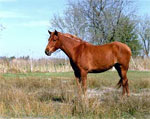
|
Abaco Spanish Colonial
|
|
Making for a great mountain climate work horse, the Abaco Barb is an intelligent breed that has a nice, calm temper. They tend to be capable of adapting to even the worst of weather conditions.
|
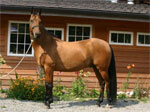
|
Akhal-Teke
|
|
Renowned for their poise and class, the Akhal-Teke makes for an excellent riding horse as well as a popular show horse due to their calm temper and sweet disposition.
|
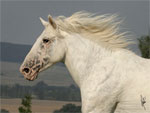
|
Altai
|
|
Considered one of the more docile breeds, the Altai is a good choice for farm work or long treks through rough terrain. They are extremely strong and can even withstand very bitter temperatures.
|
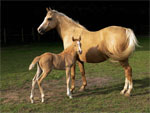
|
Alter-Real
|
|
The Alter-Real is a horse for any occasion, being strong and ready to work, laid-back and ready to ride, or hearty and ready for a show. Besides being a triple threat, they're also very smart.
|
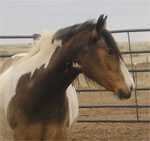
|
American Indian Horse
|
|
The American Indian Horse is best known for their endurance and ability to travel for long distances with ease, making them superb riding and work horses. They are thoughtful and even-tempered.
|
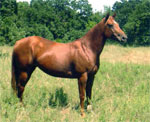
|
American Quarter Horse
|
|
Loving to race and loving to work, the American Quarter Horse is one of the more rugged breeds out there. They usually prefer to be found in packs, but they'll warm up to humans with some time and effort.
|
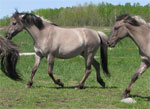
|
American Sorraia Mustang
|
|
The American Sorraia Mustang is a breed that's endured a lot, and though smaller in size compared to some other breeds, they're as tough as the best of them.
|
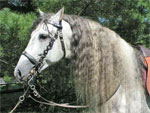
|
Andalusian
|
|
A breed that's known for being both sweet and brave when you need them to be, the Andalusian is a great riding horse for shows and parades, or even as cavalry.
|
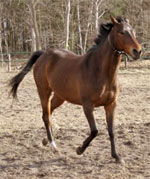
|
Anglo Arab
|
|
The Anglo Arab is a breed that can run, jump, and work like the best of them. They are easily trained and remain calm most of the day without any inherent problems. They can endure virtually any surrounding.
|
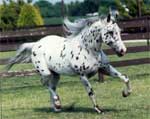
|
Appaloosa
|
|
Hardy and sweet, the Appaloosa is a horse of simplicity. Their attitude is calm and reliable, making them great for farm work, riding, and even rodeos. They're best trained when young as they pick up skills easily.
|
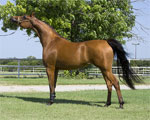
|
Arabian
|
|
Arabians are fast and have high endurance, making them great for racing and riding long distance. They are very faithful companions and will never once stray from their family when trained.
|
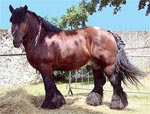
|
Ardennes
|
|
The Ardennes is an incredibly large and powerful breed, capable of hauling quite a lot. This makes them excellent work horses, though they do well when ridden if you choose to use them that way.
|
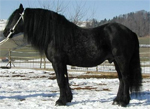
|
Ariegeois
|
|
The Ariegeois breed is a breed that finds endless uses on the farm, though it can easily be used in shows, however rare that may actually occur. They are known to be simple animals to tend to on a daily basis.
|
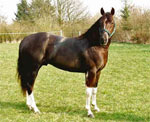
|
Australian Stock Horse
|
|
Thought of as a very smart breed, the Australian Stock Horse gets along well with other animals and horses, as well as children. They are notoriously strong and have an excellent work ethic.
|
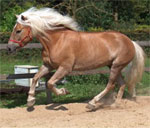
|
Avelignese
|
|
Known as a very surefooted breed, the Avelignese is great for long travels through deserts and places with extreme temperatures. They're also great for vaulting and therapeutic riding.
|
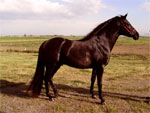
|
Azteca
|
|
The Azteca breed is generally known for having a willingness to learn and be trained. They're great in compentitions and considered a very sporty horse. They don't tend to have a wildside, so they're great for riding.
|
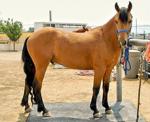
|
Abstang
|
|
Considering the inherent toughness of both the Mustang and the Arabian, it’s surprising that this mix is so new. The breed is a cross that combines two of the oldest and hardiest breeds on the planet.
|
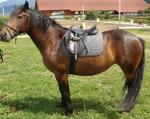
|
Abtenauer
|
|
One of the many endangered draft breeds, the Abtenauer is the smallest variation of the Noriker horse and their population numbers are very low.
|
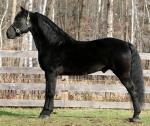
|
Abyssinian Horse
|
|
There are many breeds of horses that are rare and the information related to those breeds of horses is rarer. One of them is The Abyssinian horse, although we have tried our best to gather the information about The Abyssinian horse and put before you. Another name of The Abyssinian horse is Gala.
|
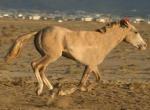
|
Adaev
|
|
The Adaev comes from the Caspian Depression and is found within the Kazakh breed which dates back to the 5th century B.C.
|
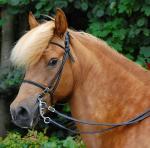
|
Aegidienberger
|
|
A cross between the elegant Peruvian Paso and the pure blood of the hardy Icelandic horse, combined to create a larger gaited animal well suited to colder climates.
|
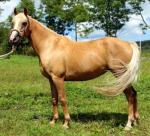
|
Albanian Horse
|
|
If we try to gather the information about The Albanian horse then we will find the two basic kind of The Albanian horse i.e. Mountain and the Myzeqea.
|
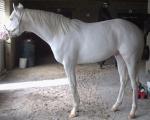
|
American Albino
|
|
To no surprise, the main physical characteristic of the American Albino is a white coat, white tail and mane, pink skin, and black, brown, or dark blue eyes. Outside of coloration, the American Albino is separated into a stock type horse, saddle horse type, and Arabian type, with separate categories for ponies.
|
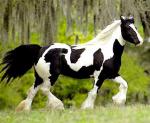
|
American Bashkir
|
|
Albinism is fatal in equines, a pure albino is a result of lethal white genes from both parents and will always die in the womb. American Albino (also called American Cream & White) horses are pure white, but not actually albino genetically.
|
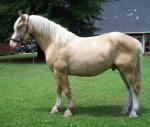
|
American Cream Draft
|
|
A relatively new breed, the American Cream Draft comes from Iowa in 1905 and a foundation mare named Old Granny.
|
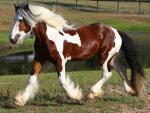
|
American Drum Horse
|
|
The drum horse makes a great heavy riding horse that has proven to be both a versatile and athletic mount. They are a relatively new breed to the US, but they have a rather distinguished history.
|
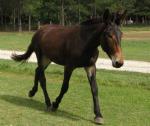
|
American Mammoth Jack
|
|
The world’s largest breed of ass, the American Mammoth Jack stock was developed in the U.S. through the selective cross breeding of imported European stock with local Native American and Mexican animals.
|
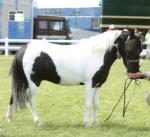
|
American Miniature Horse
|
|
Miniature horses come from English and Dutch mine horses that were imported to the Americas in the 19th century for use in coal mines in the Appalachian mountains.
|
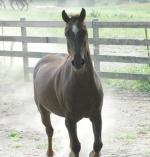
|
American Mustang
|
|
The American mustang symbolizes the freedom of the wild west in North America. The word mustang comes from the Spanish word mestena which is roughly translated as a group of wild horses.
|
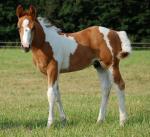
|
American Paint Horse
|
|
The paint is a performance type color breed and are bred exclusively to keep their spotted pattern. Crosses to gaited, pony or draft breeds are not recognized by the registry, only Thoroughbred or Quarter Horse blood is allowed.
|
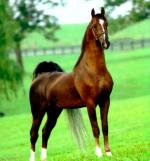
|
American Saddlebred
|
|
The American Saddlebred horse played a large part in the development of American history and they gained fame as a breed for their service during the Civil War.
|
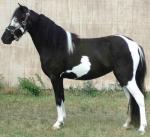
|
American Shetland Pony
|
|
Breeding centered in the state of Indiana after an influx of ponies were imported from the Scottish Shetland Islands starting in 1885.
|
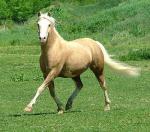
|
American Sport Pony
|
|
Sport ponies have been enjoyed for hundreds of years in Europe and their stock gradually made it’s way to North America.
|
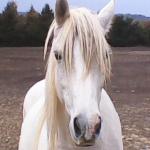
|
American Spotted Paso
|
|
One of the main goals for the breeders of the American Spotted Paso horse is combining the smooth gaits of the Peruvian Paso horse with the colorful coat patterns of the pinto.
|
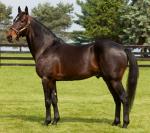
|
American Standardbred
|
|
This breed actually earns its name, trotters and pacers are required to meet speed requirements prior to registration with the breed.
|

|
American Thoroughbred
|
|
The first Thoroughbred horse imported to the American colonies was Bulle Rock in 1730. From that point on the colonies began a love affair with horse racing and thoroughbred athletes.
|
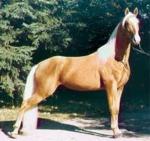
|
American Walking Pony
|
|
American Walking Pony Registry was founded in 1968 and started with experimental breeding to develop an Arabian type pony with smooth saddle gaits.
|
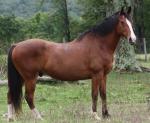
|
American Warmblood Horse
|
|
Many different bloodlines may be registered as American Warmblood horses, they are required to be of sport horse or warmblood type and meet studbook requirements.
|
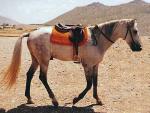
|
Anadolu Pony
|
|
Also called Native Turkish Pony or Turk, this pony is the most common Turkish breed & are known for their speed, endurance and robust nature.
|
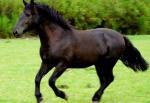
|
Andean Horse
|
|
A type of Peruvian national horse, the Andean habitat is found above 9,000 feet in the Andes mountains. The great altitude has created an animal with amazing lung capacity and a thick, dense coat of fur.
|
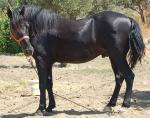
|
Andravida Horse
|
|
Also called the Eleia, Ilia, or Greek, little is known about the Andravida which is a very rare light draft breed found in the region of Ilia, Greece.
|
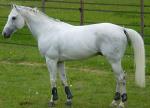
|
Anglo-Arabian Horse
|
|
An Anglo-Arabian is is a Thoroughbred crossed with an Arabian and either parent can be a member of either breed (or another cross). However the remaining offspring must have no more than 75% and no less than 25% Arabian blood.
|
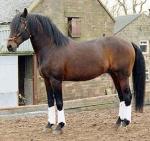
|
Anglo-Kabarda Horse
|
|
The Anglo-Kabarda is a cross between Thoroughbred and Kabarda bloodlines. To be registered they must be no less than 25% and no more than 75% Thoroughbred blood.
|
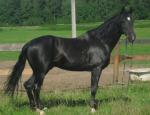
|
Anglo-Karachai Horse
|
|
A type of the Kabarda horse that is bred specifically in the Karachai republic. These animals tend to be of the most robust type of Kabardas horse and split off as their own breed during the 1960′s. The introduction of Thoroughbred blood was what created the Anglo-Karachai horse.
|
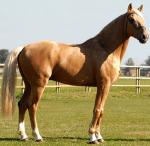
|
Anglo-Luso Horse
|
|
The Anglo-Luso comes from Portugal and began with the crossing of local Lusitano mares with English Thoroughbred stallions. However, many of the Portuguese people objected to the cross-breeding, considering it a pollution to their purebred animals.
|
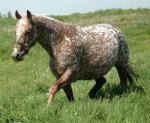
|
Appaloosa Sport Horse
|
|
The Appaloosa Sport Horse was created in the USA with the intention of creating a European style sport horse with the appaloosa coloring.
|
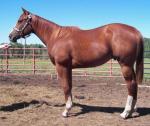
|
Appendix Quarter Horse
|
|
An Appendix Quarter Horse is a first generation cross between a registered Thoroughbred and an American Quarter Horse. They are registered as appendix but not initially eligible for a full AQHA registration.
|
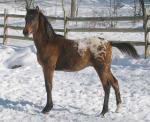
|
AraAppaloosa Horse
|
|
The AraAppaloosa is represented by the AraAppaloosa & Foundation Breeder’s International and they consider the horses they breed to be the original appaloosa horse.
|
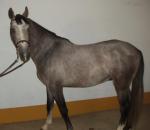
|
Arabian-Berber Horse
|
|
This breed comes from the dream of local Moroccan tribesmen and was initially created as warhorse using Arabian and Barb (or Berber) bloodlines.
|

|
Arabo-Friesian Horse
|
|
The Arabian blood was first added to the Friesian breed during Spanish invasion of the Netherlands during the late 16th and early 17th century.
|
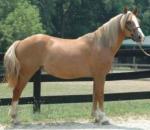
|
Arab-Haflinger
|
|
Although this cross breed was met with some resistance, some Haflinger breeders thought that Arabian blood would refine the breed and increase their athletic ability.
|
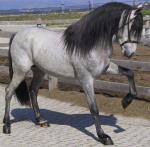
|
Aralusian Horse
|
|
Also called the Hispano-Arab, this is a relatively new breed achieved by crossing the high energy Arabians with the noble Andalusians in equal parts, creating a beautiful and intelligent cross.
|
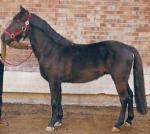
|
Arenberg-Nordkirchener
|
|
The Arenberg-Nordkirchener is dangerously close to extinction and are listed as critically endangered with their numbers in the teens.
|
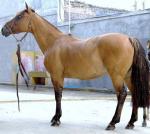
|
Argentine Criollo Horse
|
|
The Corillo breed has overcome a great deal of adversity and intense living conditions during its existence and the resulting animal is tough as nails and can cover astonishing distances.
|
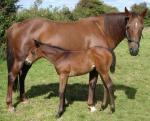
|
Argentine Polo Pony
|
|
Although the Argentine Polo Ponies are not considered a breed, Argentina is recognized the world over for their fine polo horses, a cross between Thoroughbred and Criollo blood.
|
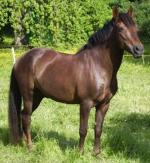
|
Arravani Horse
|
|
The Arravani is a Greek horse that is in danger of extinction and only about 200-300 of them are left in the world today.
|
|
|